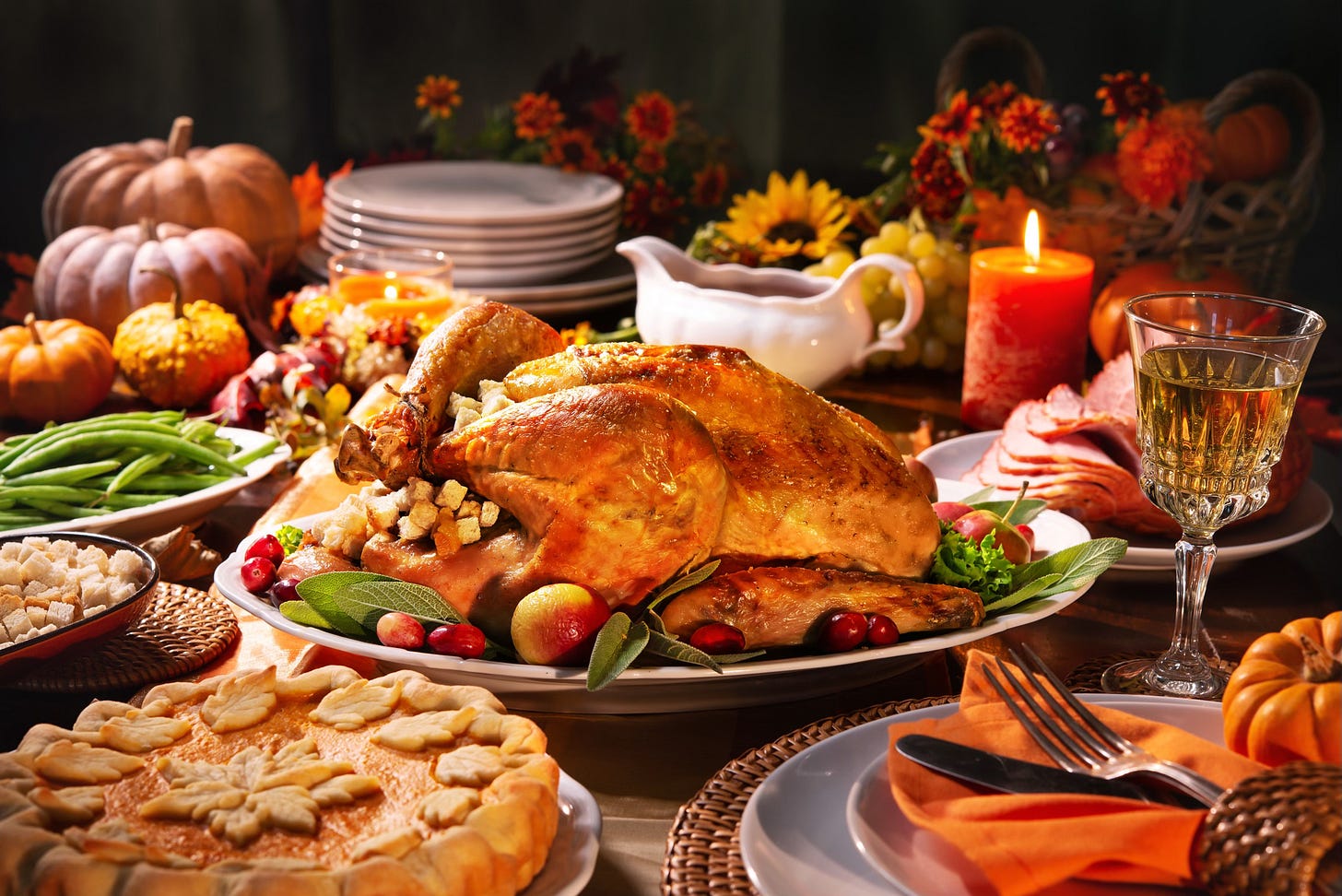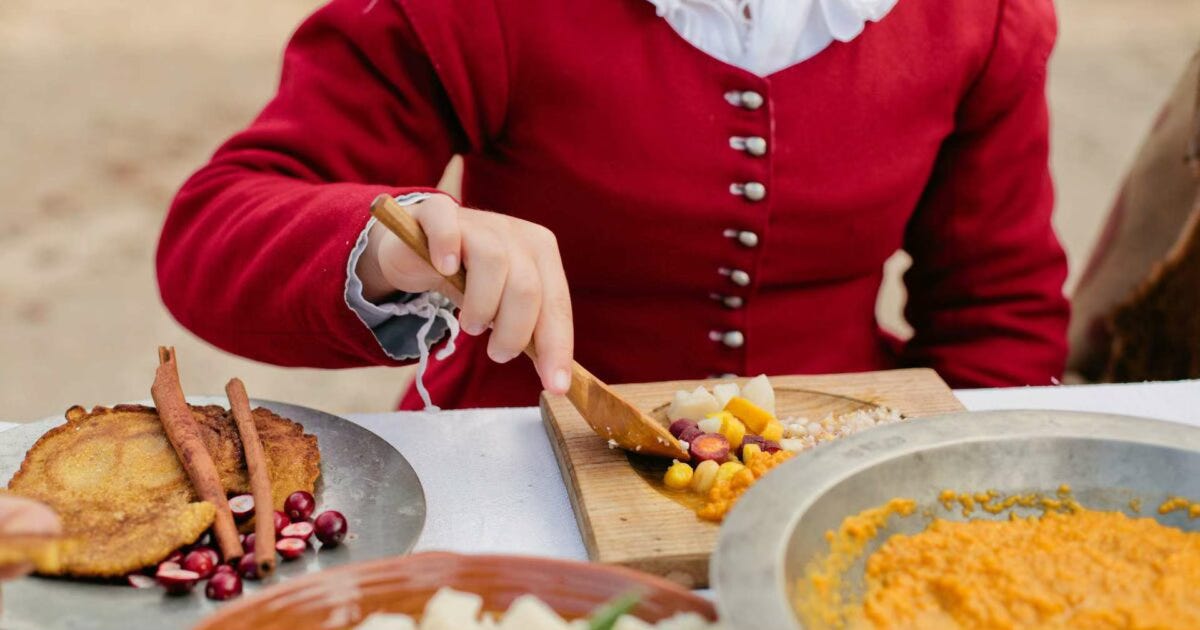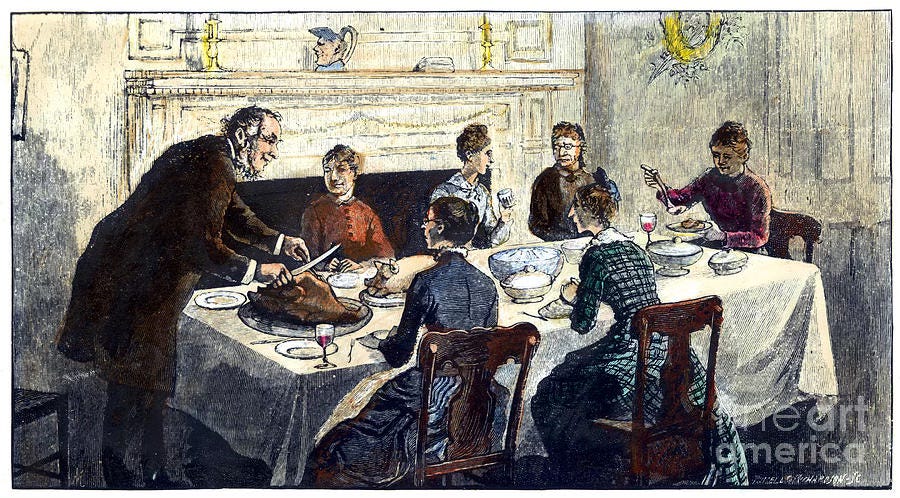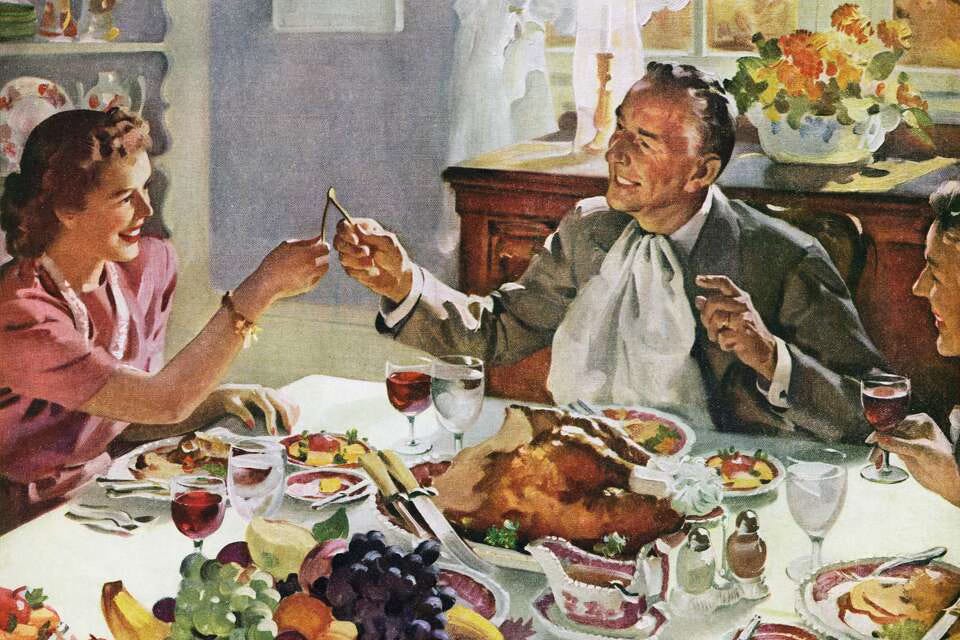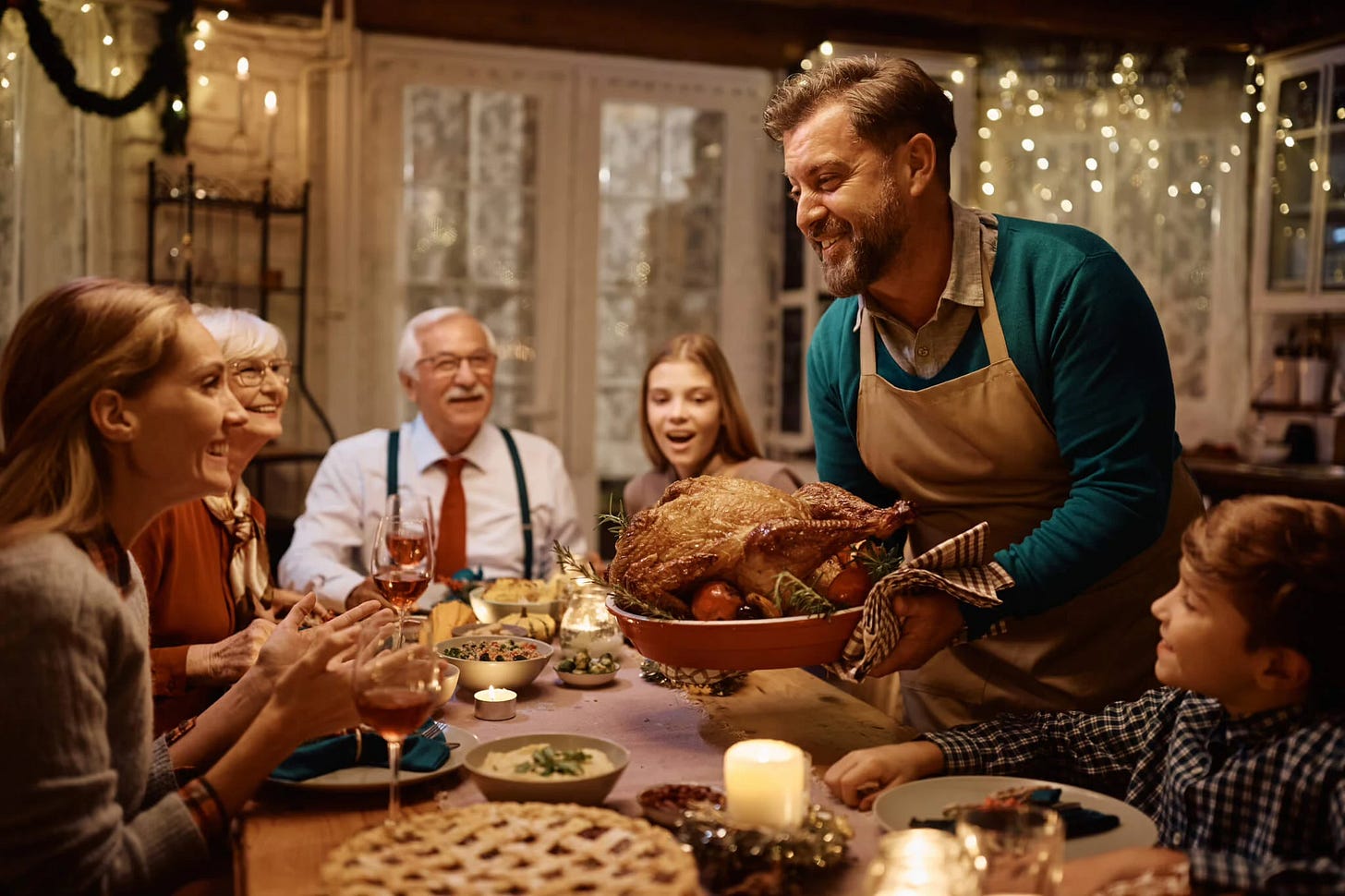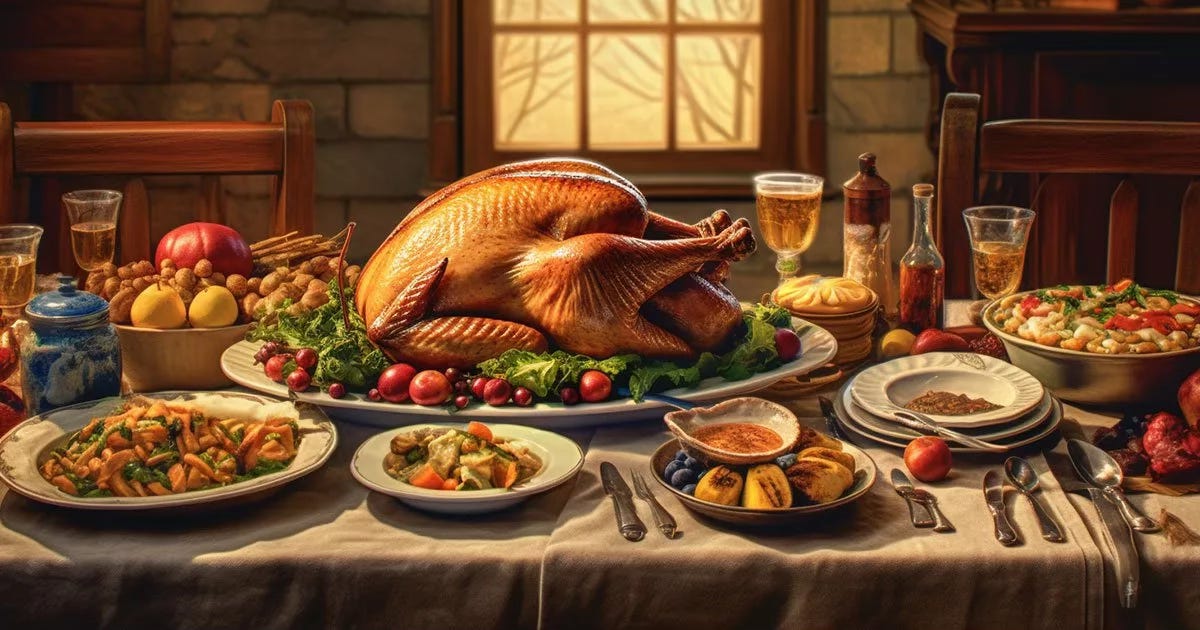Thanksgiving Recipes Through the Ages: A Culinary Journey from Pilgrims to Modern-Day Feasts
Thanksgiving has long been one of America’s most cherished holidays, filled with food, family, and a deep sense of gratitude. The traditional meal that accompanies the celebration is not just a feast but a reflection of American history, culture, and the evolution of culinary traditions. From the humble harvest fare of the Pilgrims to today’s lavish spreads, Thanksgiving recipes have transformed over the centuries. This blog post will take you on a historical journey through Thanksgiving recipes, exploring how they have changed and the stories behind them.
The Early Years: What the Pilgrims Ate at the First Thanksgiving
The first Thanksgiving, held in 1621, was a modest affair compared to the extravagant feasts we know today. The Pilgrims and Native Americans (Wampanoag people) came together to celebrate a successful harvest, but the foods they shared were far removed from the cranberry sauces and mashed potatoes that would later become staples of the holiday.
What Was on the Menu?
While the specific menu of the first Thanksgiving is not entirely known, historians believe it consisted of foods that were readily available to the Pilgrims and the Native Americans. These included:
Wildfowl: Wild turkey, ducks, and geese were likely served, though wild turkeys were not the centerpiece of the meal. Wildfowl was abundant, and hunting was a primary means of securing food.
Venison: The Wampanoag brought five deer to the feast, adding venison to the table.
Shellfish: Mussels, clams, and oysters were plentiful along the New England coast and could have been part of the spread.
Corn and Other Grains: Corn was a staple in the diet of both the Native Americans and Pilgrims. It would have been eaten in various forms, including cornmeal or corn porridge.
Squash, Beans, and Pumpkins: These vegetables, along with other native crops, were essential to the meal. Squash and beans were often cooked together, providing protein and vitamins.
Fruits: Native fruits such as cranberries, grapes, and berries were also likely part of the meal, though cranberry sauce as we know it today was not yet a Thanksgiving tradition.
A Meal Built on Simple, Local Ingredients
The first Thanksgiving was a celebration of the harvest, and it reflected the simple, local ingredients available at the time. It was a far cry from the elaborate dishes that now define the holiday. The Pilgrims did not have sugar, butter, or wheat flour readily available, so desserts like pie and cake were nonexistent. Instead, their meal focused on meats, vegetables, and fruits from the land around them.
Thanksgiving in the 19th Century: The Rise of Tradition
As the United States expanded and settled into the 19th century, Thanksgiving began to take on a more recognizable form. The country was growing, and so were its culinary traditions. The foods that had once been associated with regional harvest festivals were now becoming national symbols of Thanksgiving.
Sarah Josepha Hale and the Nationalization of Thanksgiving
Sarah Josepha Hale, the influential editor of Godey’s Lady’s Book, played a significant role in popularizing Thanksgiving. Hale campaigned for years to make Thanksgiving a national holiday, and in 1863, President Abraham Lincoln declared it as such. Hale also helped shape the menu we recognize today, advocating for dishes like turkey, stuffing, and cranberry sauce to become standard fare.
What Was on the Table in the 1800s?
By the late 19th century, Thanksgiving feasts began to include a wider range of dishes. The menu would still vary depending on region and availability, but several key items began to emerge as Thanksgiving staples:
Roast Turkey: The turkey became the centerpiece of Thanksgiving meals, thanks to its size and abundance in the United States. Roast turkey, stuffed with bread crumbs, herbs, and sometimes sausage, became the symbol of the holiday feast.
Stuffing/Dressing: Stuffing, or dressing as it is often called, became an integral part of the meal. It was typically made with bread cubes, onions, herbs, and sometimes sausage or nuts, all baked inside the turkey or separately in a pan.
Cranberry Sauce: Cranberries, which were abundant in the northeast, became a fixture on Thanksgiving tables. By the mid-1800s, cranberry sauce was being served as a sweet, tangy accompaniment to the turkey.
Sweet Potatoes and Mashed Potatoes: Potatoes, both sweet and white, started to gain popularity in American kitchens. Sweet potatoes were often baked or mashed with brown sugar and butter, while white potatoes were mashed and served with gravy.
The Advent of Thanksgiving Desserts
The 19th century also saw the rise of Thanksgiving desserts, thanks to advances in baking and the availability of ingredients like sugar, flour, and butter. Pumpkin pie, which had been a food of the early settlers, became a Thanksgiving favorite in the 1800s. Apple pies, mincemeat pies, and other seasonal desserts also made their way to the table, delighting families with their sweetness after a hearty meal.
The 20th Century: Refining and Expanding the Feast
The 20th century was a time of significant change for Thanksgiving recipes. Technological advancements in refrigeration, mass food production, and transportation made it easier to obtain ingredients year-round, which allowed for greater variety in holiday menus. Thanksgiving was no longer just about the harvest; it was now a celebration of abundance.
The Role of Convenience Foods
With the rise of convenience foods in the mid-1900s, Thanksgiving recipes began to change once again. Canned goods like cranberry sauce, green beans, and pumpkin puree became popular, making it easier for busy families to prepare their Thanksgiving meals. While some purists still prefer homemade cranberry sauce or fresh green beans, these canned items have become synonymous with the holiday for many Americans.
What Was on the Table in the 1900s?
By the 20th century, Thanksgiving meals had become more standardized across the country, though regional variations remained. The typical menu might include:
Turkey with Stuffing: Roast turkey, often brined and stuffed with a savory mixture of bread crumbs, vegetables, and herbs, remained the centerpiece of the meal.
Mashed Potatoes and Gravy: Mashed potatoes, often served with rich brown gravy, became a standard side dish, with the creamy texture complementing the turkey.
Green Bean Casserole: Introduced by the Campbell Soup Company in the 1950s, green bean casserole became an instant classic, made with green beans, cream of mushroom soup, and topped with crispy fried onions.
Pumpkin Pie and Pecan Pie: These two desserts, along with apple pie, were often featured on the dessert table, providing a sweet end to the meal.
Modern-Day Thanksgiving: Embracing Tradition and Innovation
Today, Thanksgiving meals continue to evolve as new generations of home cooks bring their own flavors and influences to the table. While many traditional dishes remain the same, modern Thanksgiving menus reflect the diversity and creativity of American cuisine.
What’s on the Table Today?
Thanksgiving recipes have become more diverse, with regional, cultural, and dietary preferences shaping the holiday meal. Some contemporary twists on classic dishes include:
Brined or Fried Turkey: Many families now brine their turkeys overnight to ensure juicy, flavorful meat. Alternatively, deep-frying a turkey has become popular in southern states for its crispy skin and tender meat.
Vegetarian and Vegan Options: As more people adopt plant-based diets, Thanksgiving menus now often include dishes like roasted vegetable medleys, vegan stuffing, and plant-based versions of traditional turkey.
Global Influences: With America’s melting pot of cultures, Thanksgiving meals now reflect global flavors. From tamales in Mexican-American households to curry-spiced dishes in Indian-American families, modern-day feasts embrace cultural diversity.
Alternative Side Dishes: Alongside mashed potatoes and green bean casserole, you might find dishes like Brussels sprouts with bacon, quinoa salads, or sweet potato gratin.
Innovative Desserts
Dessert has also seen some exciting innovations. While pumpkin and pecan pies still dominate, creative takes on these classics abound. Think pumpkin cheesecake, salted caramel pecan pie, and even Thanksgiving-themed cupcakes or ice cream cakes.
The Stories Behind the Recipes: Why We Eat What We Eat
Each dish on the Thanksgiving table has a history, whether it’s tied to regional agricultural traditions, family customs, or the evolution of cooking techniques. The turkey, for example, became synonymous with the holiday due to its size and availability, but its connection to the Pilgrims is more of a historical coincidence than a direct tradition. Similarly, the sweet potato and pumpkin pies that grace our tables are deeply rooted in American agricultural history and represent the harvest of the season.
Cranberry sauce, for instance, was not originally part of the first Thanksgiving, but it quickly became a symbol of the holiday. Its tartness provided a perfect contrast to the rich, savory flavors of the turkey and stuffing, and it became a Thanksgiving staple in the 19th century.
The evolution of Thanksgiving recipes is a reflection of America itself—constantly evolving, yet deeply rooted in tradition and history.
Conclusion: A Feast of Tradition and Innovation
Thanksgiving recipes have undergone centuries of transformation, from the simple, humble meal of the Pilgrims to the extravagant spreads enjoyed today. While the dishes may change, the underlying themes of gratitude, family, and community remain central to the celebration. As we gather around our tables this year, let us reflect on the history of the foods we share
If you enjoyed this post, please consider subscribing and helping us grow our reach. We love celebrating America and its unique traditions, beautiful locations, amazing people, and fascinating culture. Subscribing is free, and each newsletter is sent directly to your email inbox. Thank you so much for your support.




